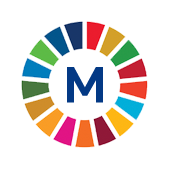 4.5.1 Parity indices in different education levelsMetadataPeriod: Every four yearsYear: 2025 |
 4.5.1 Parity indices in different education levelsMetadataPeriod: Every four yearsYear: 2025 |
| METADATA |
| Indicator information |
| Definition and methodology |
| Data source type and data collection method |
| Notes |
| ID of global indicator |
| Metadata update |
| Global metadata |
| Indicator information | Top |
| Indicator | |
4.5.1 Parity indices in different education levels | |
| Global indicator name | |
4.5.1 Parity indices (female/male, rural/urban, bottom/top wealth quintile and others such as disability status, indigenous peoples and conflict-affected, as data become available) for all education indicators on this list that can be disaggregated | |
| Target | |
4.5 By 2030, eliminate gender disparities in education and ensure equal access to all levels of education and vocational training for the vulnerable, including persons with disabilities, indigenous peoples and children in vulnerable situations | |
| Goal | |
Goal 4. Ensure inclusive and equitable quality education and promote lifelong learning opportunities for all | |
| Definition and methodology | Top |
| Definition | |
The ratio of adjusted net attendance rate by sex (girls to boys) and by wealth quintiles (poorest to richest), according to the ISCED 2011 classification. | |
| Methodological explanations | |
For categories ISCED 1 - primary school, corresponding to grades 1-4 of primary school (typically for ages 6-9 years), ISCED 2 - lower secondary school, corresponding to grades 5-8 of primary school within the national education system (typically for ages 10-13 years) and ISCED 3 - upper secondary school, corresponding to grades 1-4 of secondary school within the national education system (typically for ages 14-18 years).
MICS 6: https://www.stat.gov.rs/media/5611/mics6_izvestaj_srbija.pdf | |
| Method of calculation | |
The value of the indicator for the potentially more vulnerable group is divided by the value of the indicator for the other subgroup of interest. | |
| Unit of measure | |
Ratio | |
| Available disaggregation | |
Data type, Education level (ISCED 2011) | |
| Territorial level | |
Republic of Serbia | |
| Data source type and data collection method | Top |
| Data source | |
Multiple Indicator Cluster Survey (MICS) | |
| Periodicity of data collection | |
Every four years | |
| Notes | Top |
The last available data are from 2019, when the last MICS survey was conducted in the Republic of Serbia. | |
| ID of global indicator | Top |
C040501 | |
| Metadata update | Top |
| 30/5/2025 | |
| Global metadata | Top |
https://unstats.un.org/sdgs/metadata/files/Metadata-04-05-01.pdf | |